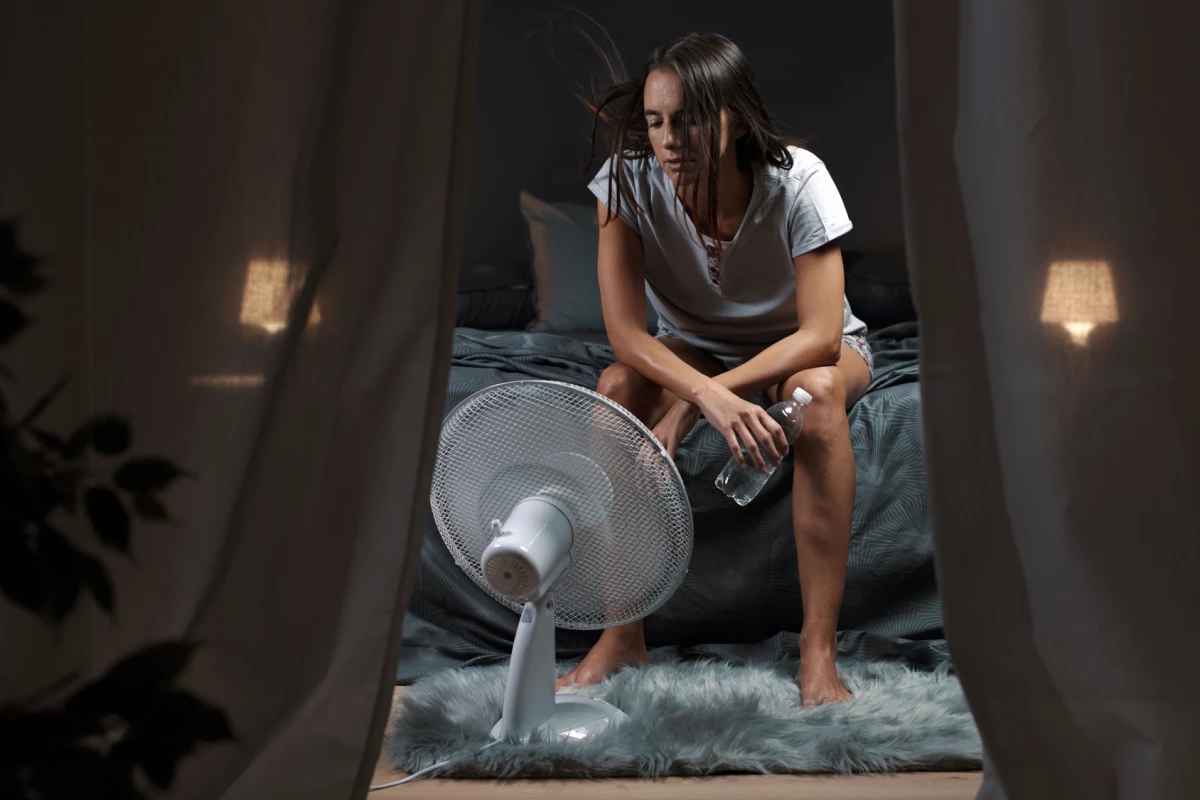The second leading cause of death and the third leading cause of disability globally, stroke is a common and debilitating condition. While much is known about risk factors like high blood pressure, diabetes, alcohol consumption and high cholesterol, relatively little is known about how ambient temperature, particularly at night, affects stroke risk.
This led researchers from Helmholtz Munich and the Augsburg University Hospital, both in Germany, to examine the link between rising night-time temperatures and the prevalence of stroke.
“We wanted to understand the extent to which high night-time temperatures pose a health risk,” said Alexandra Schneider, head of the Environmental Risks working group at Helmholtz Munich and senior author of the study. “This is important because climate change is causing night-time temperatures to rise much faster than daytime temperatures.”
According to a 2020 study, global warming caused night-time temperatures to rise more than daytime temperatures in most parts of the world between 1985 and 2017. The authors of that study put this down to greater cloud cover, which limited daytime temperatures but stopped daytime heat escaping at night.
In the current study, the researchers examined data from 11,037 patients admitted to the Augsburg University Hospital’s Department of Neurology with a stroke diagnosis between 2006 and 2020. The mean age of the patients was 71. They also obtained hourly air temperature, relative humidity, and barometric pressure data from the local Augsburg meteorological station.
Extremely hot nights were categorized using the so-called ‘hot night excess’ (HNE) index, which measures how much night-time temperatures rise above a certain threshold value. Specifically, the threshold value was defined as 5% (the 95th percentile) of the daily minimum temperature during the 15-year study period, which was 14.6 °C (58.3 °F). If the temperature rose above this value, the night was deemed to be extremely hot.
The researchers divided the study period into two: 2006 to 2012 and 2013 to 2020. The daily mean temperature during the warm period (May to October) went from 14.5 °C (58.1 °F) in the earlier period to 14.8 °C (58.6 °F) in the latter – a statistically non-significant rise. The daily maximum temperature also increased marginally from 19.6 °C (67.3 °F) to 20.3 °C (68.5 °F). Although the temperature increases were mild, the average HNE was much increased in the more recent period, and the number of days with high night-time temperatures went from 79 days in the earlier period to 82 in the latter.
Analyzing the potential relationship between extreme heat during the night and stroke occurrence, the researchers found that extreme night-time heat increased the risk of stroke by 7%. The risk also increased significantly during the more recent period, compared with the earlier one. From 2006 to 2012, there were two additional cases of stroke per year, and between 2013 and 2020, there were 33 additional cases.
“Elderly people and women are particularly at risk, and it is mainly strokes with mild symptoms that are diagnosed in clinics after hot nights,” said the study’s lead and corresponding author, Cheng He. “Our results make it clear that adjustments in urban planning and the healthcare system are extremely important to reduce the risks posed by rising night-time temperatures.”
Heat can be deadly, especially for the elderly, the very young, and those with medical conditions. In urban areas, concrete and asphalt heat up during the day and only slowly release heat overnight; the ‘urban heat island’ effect. This, coupled with people’s fear of opening their windows at night for safety reasons, means that homes can quickly become very hot.
In 2003, an estimated 70,000 people died when a three-week heat wave hit Europe. In the US, of all the natural disasters – including floods, hurricanes, and tornados – heat causes the most fatalities by a large margin.
The present study has limitations. Namely, meteorological data was only obtained from one outdoor monitoring station, which may not accurately reflect temperatures in different regions within the study area. Also, indoor temperatures may differ from outdoor temperatures, but because the study was limited to the warmer months, the difference may be less pronounced. Before you ask, ‘Why didn’t they turn on their air conditioners?’, it’s estimated that only 3% of German residences have them.
The researchers are working on finding practical applications for their findings, including reducing the intensity of urban heat islands. Importantly, they say that their study has highlighted another preventable risk factor for stroke and opens the door to further research.
The study was published in the European Heart Journal.
Source: Helmholtz Munich





